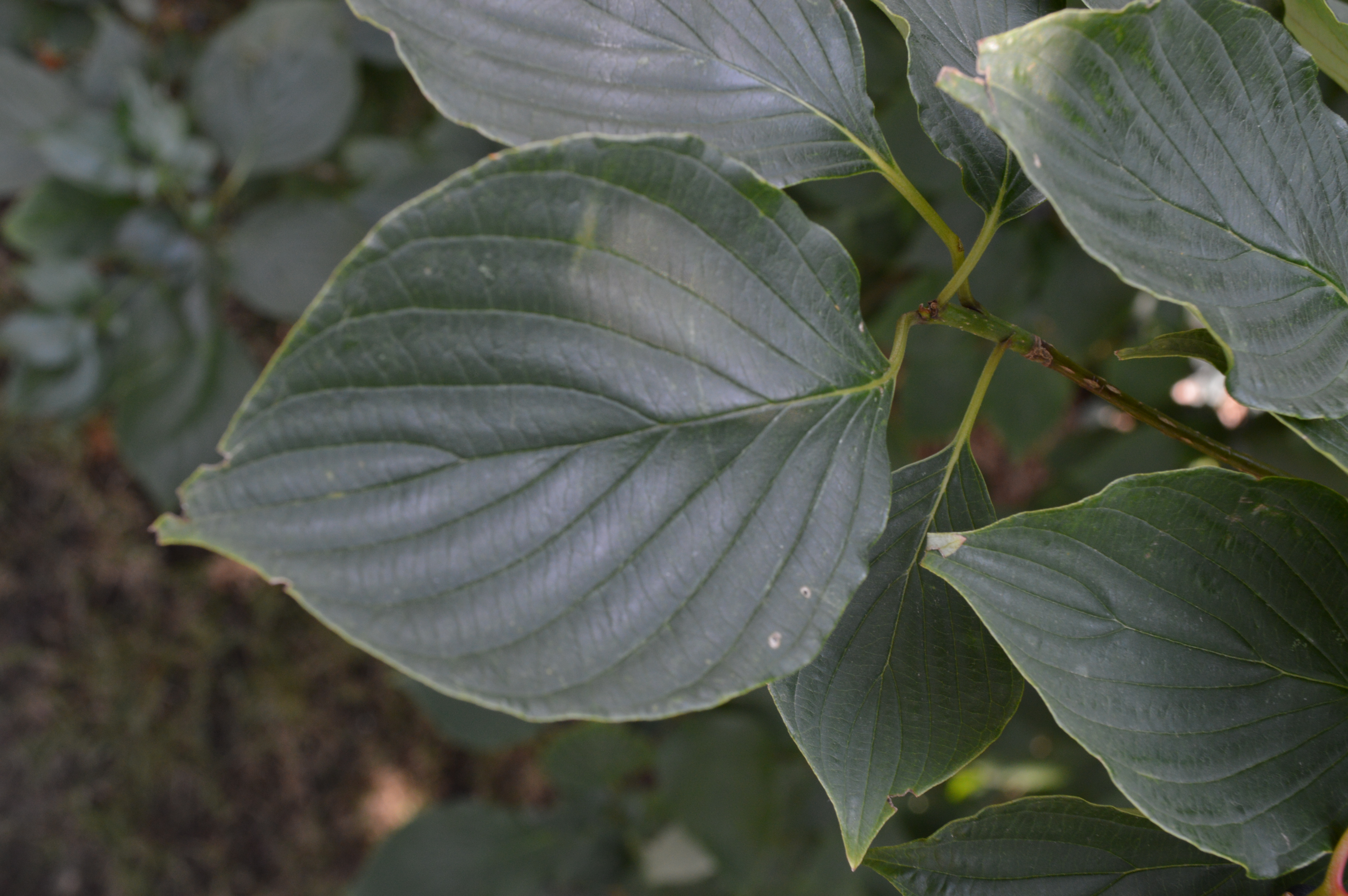
Description:
Pagoda dogwood can be a shrub or small tree with green, red, or purple branches growing 3-30’ in height with a distinctive flat topped crown accompanied by a spreading horizontal branch architecture. The older parts of the plant, such as the trunk, are mostly smooth and light brownish green. Leaves are broad and oval, and are up to 4” long. They have a rounded based with a tapering tip, and are alternated spaced, often at the ends of branches. Its flowers are fragrant and light yellow to cream colored.
The flowers are a nectar source for the Spring Azure butterfly, which also utilizes the plant as a host site for its larva laying eggs on the flower buds. After flowering, the dogwood will produce pea-sized fruits in clusters that are either green or bluish black depending on the time of year. The fruit is bitter and enjoyed by a variety of native wildlife such as birds, bears, squirrels, pheasants, wild turkey, and grouse. The buds of the plant, alternately arranged, are purple and slightly fuzzy/hairy. Pagoda dogwood is used as an ornamental tree/shrub.
The native distribution of the plant is mainly in the northeastern and upper mid-western United States stretching north into southern Canada. The plant is found natively as far south as northern Florida and Mississippi, however, the plant becomes much sparser in its distribution in the southeastern region of the United States. Cornus alternifolia is found natively in deciduous and mixed forests where it inhabits understory and border areas. It is also said to inhabit floodplains, cedar swamps, and the banks and thickets above lakes and streams. It happily grows in shaded and partially shaded areas in moist well drained acidic soil, though will tolerate a range of soil conditions.
Issues:
Golden canker, caused by the fungus Cryptodiaporthe corni, can kill stems and branches, but does not travel to the root system.
Other Resources:

